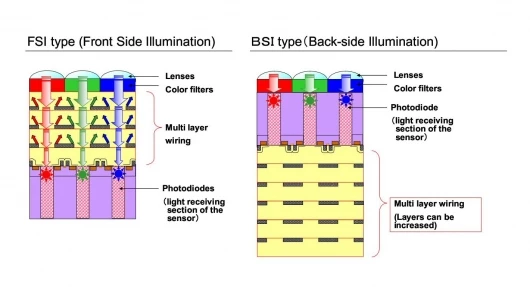Toshiba has announced a 14.6 megapixel CMOS sensor for mobile phones and digital cameras which it says will boost light sensitivity and absorption by up to 40 percent. Whereas conventional sensors have multi-layer wiring sandwiched between the lenses and light receiving substrate, Toshiba has moved the wiring out of the way and placed the lenses and the photodiodes together.
Light entering a conventional CMOS sensor from an angle can be blocked or reflected by the wiring positioned between the lenses and the section that receives the light. Attaching the lenses to the back side of the silicon substrate delivers the incoming light directly to the photodiodes and allows for the wiring layer size to be increased or decreased as needed without affecting image quality.
The pixel pitch of the new 1/2.3in sensor is only 1.4 microns (by comparison the pixel size of Nikon's new D3S is 8.45 microns and Canon's EOS 1D MkIV is 5.7 microns) and this would usually mean a lot of noise on an image. But Toshiba claims that repositioning the lens so that wiring no longer limits light absorption should lead to "a new level of image quality to mobile phones".
When production begins early next year, Toshiba plans to use the new back-side illumination CMOS "to promote its full-scale entry to digital camera market" while continuing to develop the technology further.




